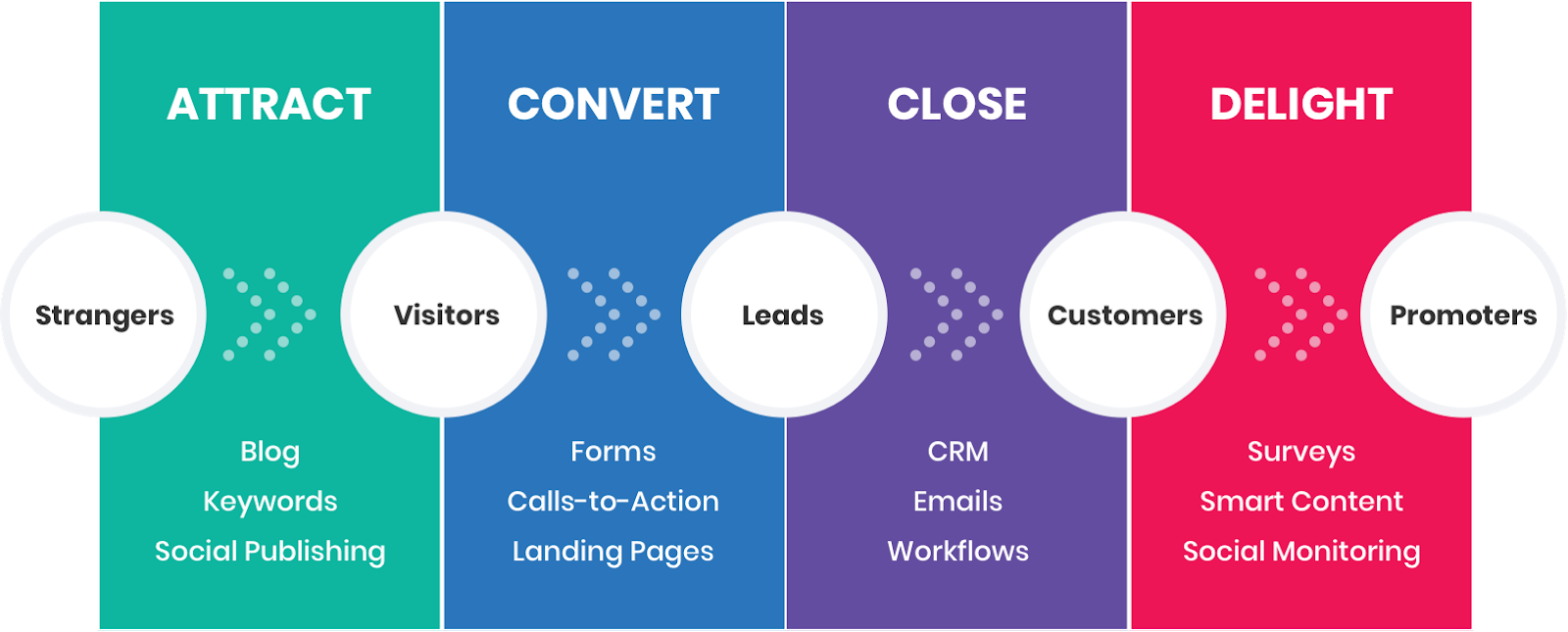The Bernard Rodriguez Journal
Exploring the latest trends and stories in news and lifestyle.
Inbound Marketing Magic: Turning Strangers into Customers
Unlock the secret to transforming strangers into loyal customers with proven inbound marketing strategies that captivate and convert!
What Are the Key Components of Inbound Marketing?
Inbound marketing is a strategic approach focused on attracting customers through relevant and helpful content, rather than interrupting them with traditional advertising. The key components of inbound marketing include content creation, SEO, and social media marketing. Content creation involves developing valuable and informative materials like blog posts, videos, and podcasts, which engage potential customers and establish authority in the industry. SEO, or search engine optimization, enhances the visibility of this content in search engine results, driving organic traffic to your website.
Another crucial component is lead nurturing, which helps convert visitors into leads and eventually customers. This involves using email marketing and personalized content to guide prospects through their buyer's journey. Additionally, analytics play a vital role in measuring the success of inbound marketing efforts, allowing businesses to track engagement, identify trends, and optimize their strategies accordingly. By implementing these components effectively, companies can build lasting relationships with their audience and drive sustainable growth.

How to Create Engaging Content That Attracts Customers
Creating engaging content that attracts customers begins with understanding your audience. Conduct thorough research to identify their interests, needs, and pain points. Utilize tools like surveys and analytics to gather insights that will guide your content creation process. Craft compelling headlines that grab attention, and ensure your content is structured with subheadings, bullet points, and images to enhance readability. By providing valuable information that resonates with your audience, you increase the chances of keeping them engaged and coming back for more.
Moreover, incorporating storytelling into your content can significantly boost engagement. Stories create an emotional connection and make your messages more relatable. Consider using anecdotes or case studies that demonstrate how your products or services solve real problems. Additionally, include calls to action that encourage readers to interact, whether by leaving comments, sharing your content, or signing up for newsletters. By combining valuable insights with an engaging narrative style, you'll create content that captivates your audience and drives customer attraction.
The Ultimate Guide to Turning Strangers into Loyal Customers with Inbound Marketing
Inbound marketing is a powerful strategy designed to attract, engage, and delight customers. The process begins by creating valuable content that resonates with your target audience, allowing you to turn strangers into loyal customers. This involves understanding their pain points and interests, then crafting content that addresses these needs. Utilize various formats like blog posts, videos, and infographics to cater to different preferences. Furthermore, focus on optimizing all content for SEO to ensure that your audience can easily discover it through search engines.
Once you have successfully attracted visitors, the next step is to engage them through personalization and interaction. Utilize tools like email marketing and social media to build relationships with potential customers. Create a well-defined marketing funnel that guides your audience from awareness to consideration and finally to conversion. Remember, it’s essential to consistently provide value at every stage, fostering trust and rapport. By implementing strategies that prioritize the customer experience, you're not just selling a product but building a community—a crucial element in turning first-time visitors into loyal customers.